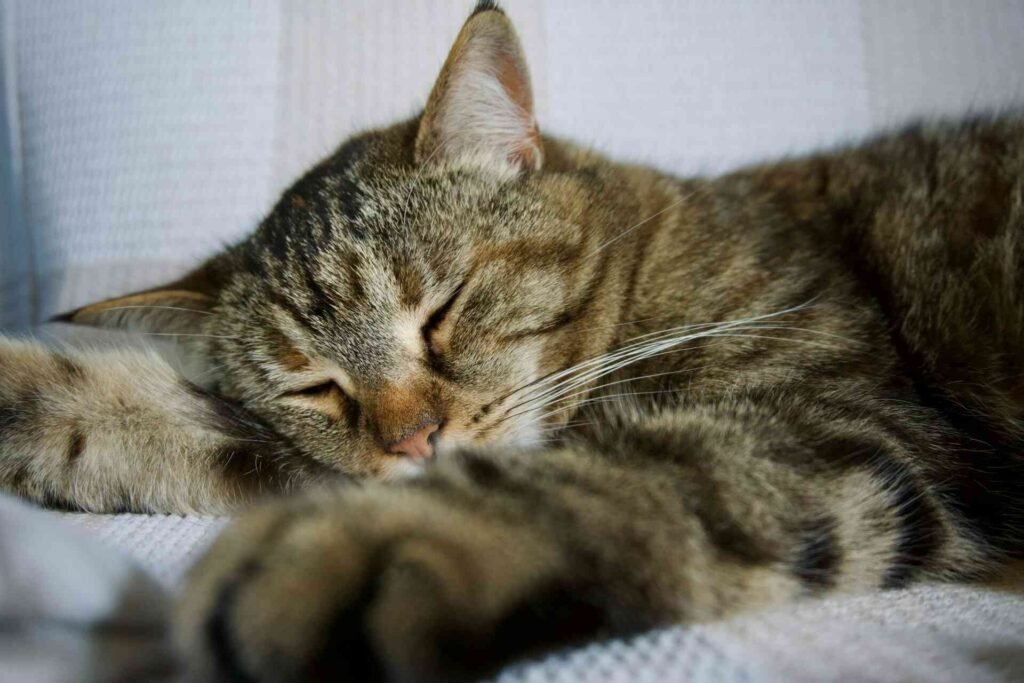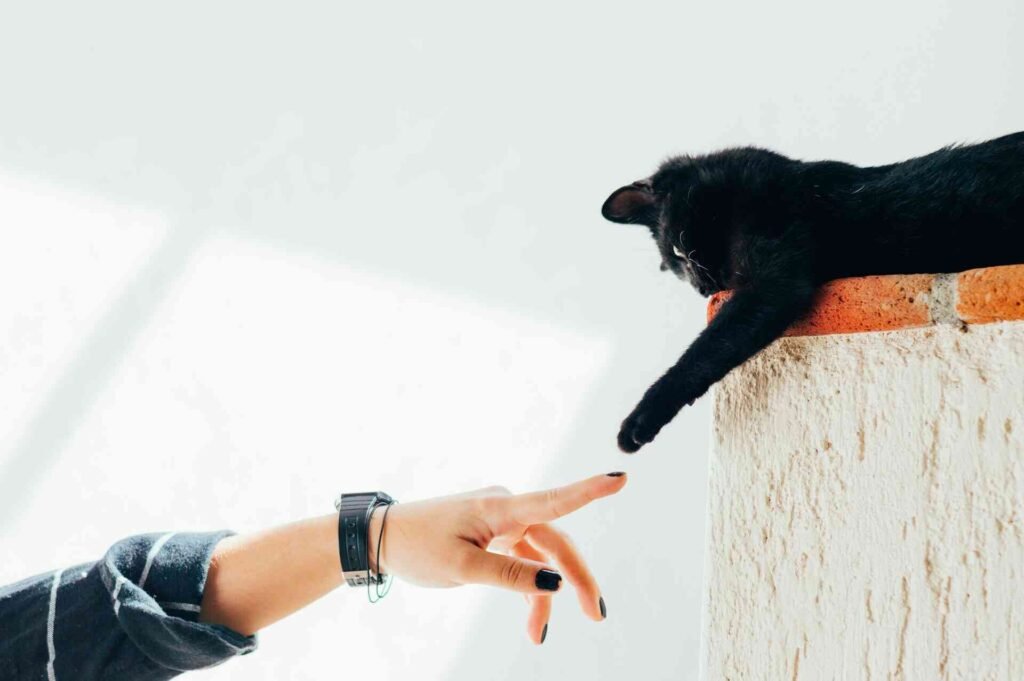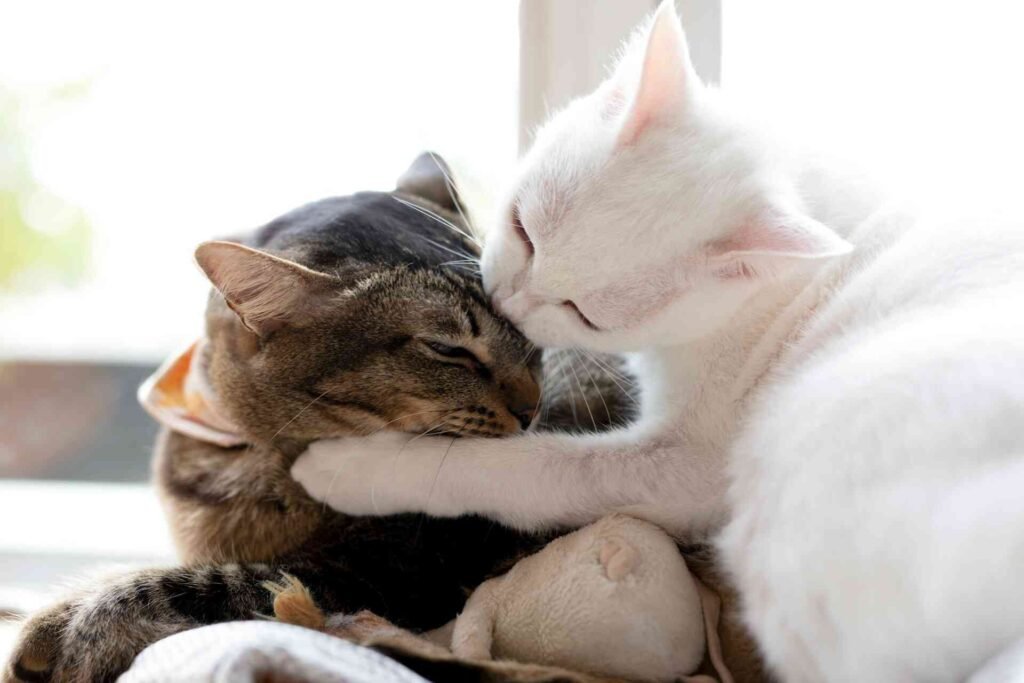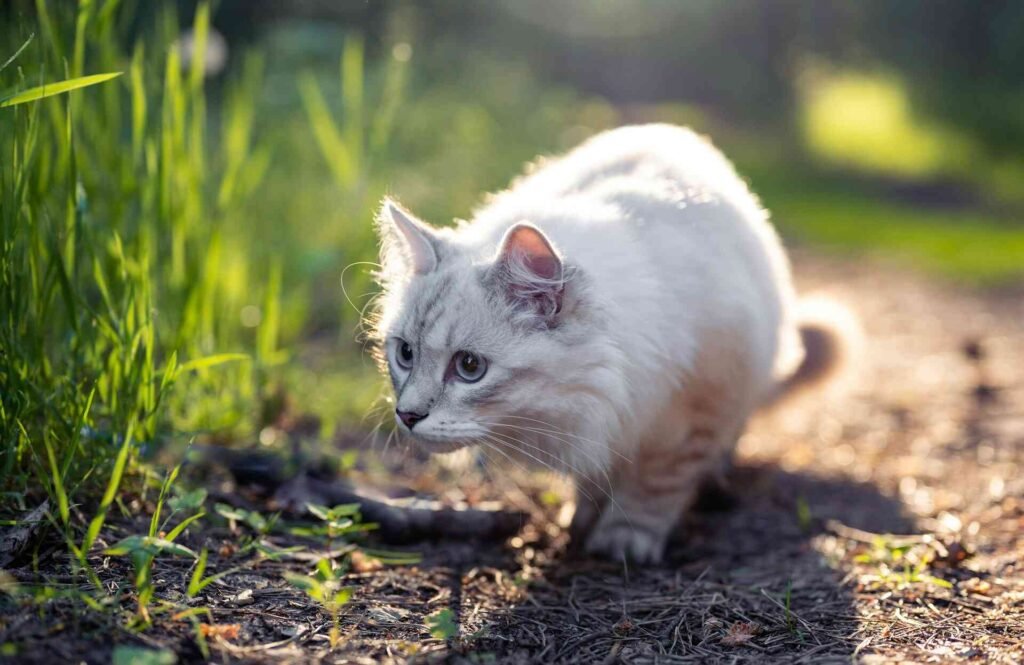Those twitching whiskers, gently paddling paws, and soft sleep-chirps from your slumbering cat aren’t just adorable, they’re glimpses into your pet’s rich dream world. While we’ve established in our article Do Cats Dream? Understanding Your Pet’s Sleep Behaviors that our feline friends do indeed dream, a more fascinating question remains: what exactly do cats dream about during those cozy catnaps?

The Content of Cat Dreams: What Science Tells Us
When cats enter REM sleep, the dream-active phase characterized by rapid eye movements beneath closed lids, their brains fire in patterns remarkably similar to when they’re awake and engaged in various activities. This neurological evidence provides our strongest clues about the content of feline dreams.
Research suggests that cats, like other mammals, primarily dream about their daily experiences. Those paw twitches and whisker movements aren’t random; they’re physical manifestations of your cat mentally replaying their day, hunting adventures, play sessions, exploration, and yes, even interactions with you.
What makes this particularly interesting is the personalized nature of each cat’s dreams. A primarily indoor cat might dream about different scenarios than an outdoor cat who spends time hunting. Your specific cat’s dreams likely reflect their unique lifestyle, preferences, and experiences.
Do Cats Dream About Their Owners?
One of the most heartwarming questions cat parents ask is whether their beloved pets dream about them. The evidence strongly suggests they do!
Cats form genuine attachments to their human companions, and these significant relationships occupy substantial portions of their waking thoughts and experiences. Since dreams process important daily experiences, your feline friend almost certainly includes you in their dreamscapes.
What might these owner-centered dreams look like from your cat’s perspective? They could include:
- Comforting memories of being petted in their favorite spot
- Playful interactions with their favorite human
- The security of curling up beside you
- The anticipation of mealtime routines

As noted in our article on Dog People vs. Cat People, the bonds between cats and their humans are uniquely deep despite often being more subtle than dog-human relationships. These meaningful connections almost certainly feature prominently in feline dreams.
The Emotional Landscape of Cat Dreams
What do cats dream of in terms of emotions and feelings? While we can’t directly access their subjective experiences, behavioral evidence suggests cats experience a range of emotions in their dreams similar to humans:
- Contentment: When your cat makes gentle purring sounds during sleep
- Excitement: Quick paw movements and tail twitches suggest hunting or play dreams
- Curiosity: Small ear movements and whisker twitches might indicate exploratory dreams
- Frustration: Occasional growls or grumbles during sleep
- Fear: More pronounced body movements or sudden waking
This emotional dimension adds depth to our understanding of cat dreams. They’re not simply replaying mechanical actions but reliving experiences complete with the feelings associated with those moments.
Do Cats Have Bad Dreams?
Unfortunately, just as cats can experience negative emotions while awake, they can also have unsettling dreams or nightmares. Signs your cat might be experiencing a bad dream include:
- Tense body posture during sleep
- Twitching more violently than usual
- Distressed vocalizations
- Sudden waking with dilated pupils
- Momentary disorientation after waking
Cats who have experienced trauma may be particularly prone to bad dreams. Rescue cats with difficult histories might process these experiences through dreams as part of their emotional healing. This parallels what we know about dream processing in humans and other mammals.
The Visual World of Cat Dreams: Do Cats Dream in Color?
A fascinating question about feline dreams concerns their visual nature: do cats dream in color or black and white? While cats can’t tell us directly, what we know about their visual system provides compelling clues.
| Visual Aspect | Human Vision | Cat Vision | Likely Dream Experience |
|---|---|---|---|
| Color perception | Full spectrum | Limited color range | Muted colors, emphasis on blues/yellows |
| Night vision | Limited | Enhanced | Higher contrast, especially in low light |
| Movement detection | Good | Excellent | Vivid motion in dreams |
| Peripheral vision | ~180 degrees | ~200 degrees | Wider visual field in dreams |
Cats have fewer color receptors than humans, with vision optimized for detecting movement rather than distinguishing between colors. Their eyes contain primarily blue and yellow receptors, with limited red perception. This suggests that if cats dream visually (which seems likely), their dreams probably feature a more muted color palette than human dreams, with emphasis on blues, yellows, and contrasts rather than rich, vivid colors.
However, cats compensate with superior motion detection and night vision capabilities that likely translate into dreams with exceptional sensitivity to movement and contrast.
How Age Affects What Cats Dream About
The content of feline dreams likely changes throughout their lifespan:
Kittens: Young cats probably dream intensely about:
- Play experiences with littermates
- Basic skill development like pouncing and climbing
- Early social interactions
- Environmental exploration
Adult Cats: Mature cats likely dream about:
- Hunting sequences (even indoor cats)
- Territory patrols and marking
- Social interactions with humans and other animals
- Comfortable resting spots

Senior Cats: Older felines might experience:
- More leisurely dream content
- Memories from their younger days
- Familiar routines and comfort
- Stronger dreams about human companions
Dream Themes Based on Cat Personality Types
What a cat dreams about may also correlate strongly with their unique personality:
- The Hunter: Cats with strong prey drives likely dream vividly about stalking, chasing, and capturing prey
- The Social Butterfly: Naturally friendly cats probably dream more about interactions with their humans and other pets
- The Window Watcher: Cats who spend hours observing outdoors may dream about birds, squirrels, and other creatures they monitor
- The Cautious Cat: More timid felines might process potential threats and safe hiding spots in their dreams
Just as our personalities shape our dream content as humans, your cat’s individual temperament influences what occupies their dream world. Recognizing your cat’s personality type can offer insights into what might be happening behind those twitching whiskers!
When Cats Dream of Play
Play behaviors frequently appear in cat dreams, especially after stimulating play sessions. The mental and physical benefits of play extend into sleep, as their brains process these engaging experiences.
When your cat dreams about play, you might notice:
- Gentle paw batting movements
- Small jaw movements (as if catching a toy)
- Tail flicks similar to their excited play posture
- Soft chattering sounds
Cats Dreaming of Hunting: Their Evolutionary Legacy
Perhaps the most common dream theme for cats involves hunting sequences. Even pampered indoor cats who’ve never caught actual prey often display classic hunting movements during dream states:
- The focused stare (rapid eye movements under closed lids)
- The stalking freeze (sudden stillness during sleep)
- The pounce (sudden jerking movements)
- The capture (mouth movements, paw clasping)

These dream sequences reflect millions of years of evolutionary wiring. Your domestic cat shares 95.6% of their genetic makeup with wild big cats, and this evolutionary heritage manifests vividly in their dreams. Even cats who have never hunted live prey still carry these instinctual patterns that emerge during REM sleep.
Frequently Asked Questions
How can I tell what my cat is dreaming about?
While we can’t know exactly, observe their sleep movements carefully. Paw twitches often indicate hunting or play dreams, ear movements might suggest monitoring sounds, and purring likely reveals contentment. Their body language during sleep often mirrors their waking activities.
Do cats remember their dreams when they wake?
Cats probably don’t consciously recall dreams the way humans might describe a dream upon waking. However, the emotional impact of dreams may linger, affecting their mood. A cat who wakes suddenly from a bad dream might be temporarily disoriented or anxious.
Should I wake my cat from a nightmare?
Generally, no. Interrupting sleep cycles can be disorienting for cats. Instead, create a calm environment and be gently present if they wake naturally from what appears to be a bad dream. Consistent daytime enrichment and security can reduce nightmare frequency.
Do blind cats dream visually?
Cats who become blind after having sight likely retain visual imagery in their dreams. However, cats blind from birth would have dreams dominated by their other senses, particularly hearing, smell, and touch, without visual components.
Conclusion: The Wonder of Feline Dreamscapes
The next time you observe your sleeping cat’s whiskers twitching or paws gently paddling through dreamland, take a moment to appreciate the rich inner world they’re experiencing. Their dreams, whether of hunting adventures, playful encounters, or peaceful moments with you, represent another fascinating dimension of these complex companions we welcome into our homes.
While we may never know precisely what cats dream about with absolute certainty, the scientific evidence and behavioral observations paint a compelling picture of dream content that reflects their evolutionary heritage, daily experiences, and emotional lives. These dreams serve important functions in memory consolidation, skill refinement, and emotional processing.
As we explained in our article Do Cats Dream? Understanding Your Pet’s Sleep Behaviors, creating safe, enriching environments for our feline friends supports not only their waking hours but also their dream experiences. By understanding what likely occupies your cat’s dreams, you gain deeper insight into their unique perspective on the world, both waking and sleeping.
The next time your cat drifts off to sleep beside you, perhaps you can take comfort in knowing that in their dreams, you likely hold a special place, just as they do in yours.
Looking for more? Explore our Cat Health section for more tips like this, visit the Blog for fun and insightful reads, or browse our full Cat Category for everything feline-related, from care to comfort.
Disclaimer: This article is for informational purposes only and does not substitute for professional veterinary advice. Always consult your veterinarian for diagnosis and treatment tailored to your cat’s individual needs. Please verify current product information directly on the retailer’s site before purchasing.
References
- Bates, M. (2016). What do animals dream about? Peek inside the minds of sleeping animals. Muse, 20(9), 20+. https://link.gale.com/apps/doc/A472473327/HRCA
- Cho, Y., Hu, L., Hou, H. et al. The tiger genome and comparative analysis with lion and snow leopard genomes. Nat Commun 4, 2433 (2013). https://doi.org/10.1038/ncomms3433
- Goldman, J. G. (2014). What do animals dream about? https://www.bbc.com/future/article/20140425-what-do-animals-dream-about
- Malinowski, Josie & Scheel, David & McCloskey, Mitchel. (2021). Do animals dream?. Consciousness and Cognition, 95. https://doi.org/10.1016/j.concog.2021.103214
- Manger PR, Siegel JM. Do all mammals dream? J Comp Neurol. 2020; 528: 3198–3204. https://doi.org/10.1002/cne.24860
Check out our most recent articles!
- Cats and Snow: Why Some Love It and Others Don’tSnow isn’t just uncomfortable for many cats, it’s a complete sensory overload. From cold paw pads to wet fur and changed landscapes, winter challenges feline comfort in unexpected ways. Learn how to recognize stress signals and create cozy alternatives for snow-averse cats.
- Christmas Names for Cats: From Classic to Creative Holiday IdeasNaming your holiday cat goes beyond festive fun. Discover why Christmas-inspired names age beautifully, spark instant connections with fellow pet lovers, and capture the warmth cats bring to our homes during the most magical season of the year.
- How to Keep Your Cat From Drinking Christmas Tree WaterYour cat’s obsession with Christmas tree water isn’t just annoying, it’s genuinely dangerous. From harmful bacteria to toxic additives, that festive reservoir poses real health risks. Discover practical solutions that protect your pet without sacrificing holiday cheer.
- Best Cat Toys for Christmas: The Ultimate Guide to Holiday JoyNot all Christmas gifts end up under the tree, some get batted across the floor at 3 AM. Explore the wonderful world of holiday cat toys that match your feline’s personality, from plush companions for cuddlers to high-tech options for the eternally energetic.
- Are Fake Christmas Trees Safe for Cats? A Holiday Safety GuideThat beautiful Christmas tree might look festive to you, but to your cat, it’s an irresistible climbing gym with built-in toys. Find out whether artificial trees are truly safer for cats and discover the hidden dangers lurking in your holiday decorations.
- The Best Christmas Gifts for Cats That’ll Actually Get Used (Not Ignored)Not all Christmas gifts land on the nice list with our feline friends. Discover which presents actually spark joy in cats and which ones end up gathering dust under the couch by New Year’s Day.
- Do Cats Eat Less in Winter? How Cold Weather Affects Your Cat’s AppetiteWinter brings more than just cold weather, it can completely change your cat’s eating habits. From bored indoor cats to outdoor ferals fighting to survive, discover what’s really driving those appetite changes and how to respond appropriately.
- Are Humidifiers Good for Cats? A Complete Safety & Health GuideNot all humidifiers are cat-safe, and some common practices could be toxic. Learn why cool mist beats warm mist, why essential oils are dangerous for felines, and how proper humidity levels between 30-50% support your cat’s breathing and coat health.
- How to Protect Leather Furniture From Cats (Without Losing Your Mind)Leather furniture and cat claws seem like natural enemies, but they don’t have to be. Learn why your cat is drawn to that expensive couch in the first place, and how simple redirects can save your furniture while keeping your cat’s natural behaviors satisfied.
- The Best Material for Cat Bowls: Protect Your Cat from BacteriaStainless steel, ceramic, or plastic, which material keeps your cat healthiest? We break down the science behind cat bowl materials, revealing why some harbor bacteria and others last decades without compromising your feline’s wellbeing.










